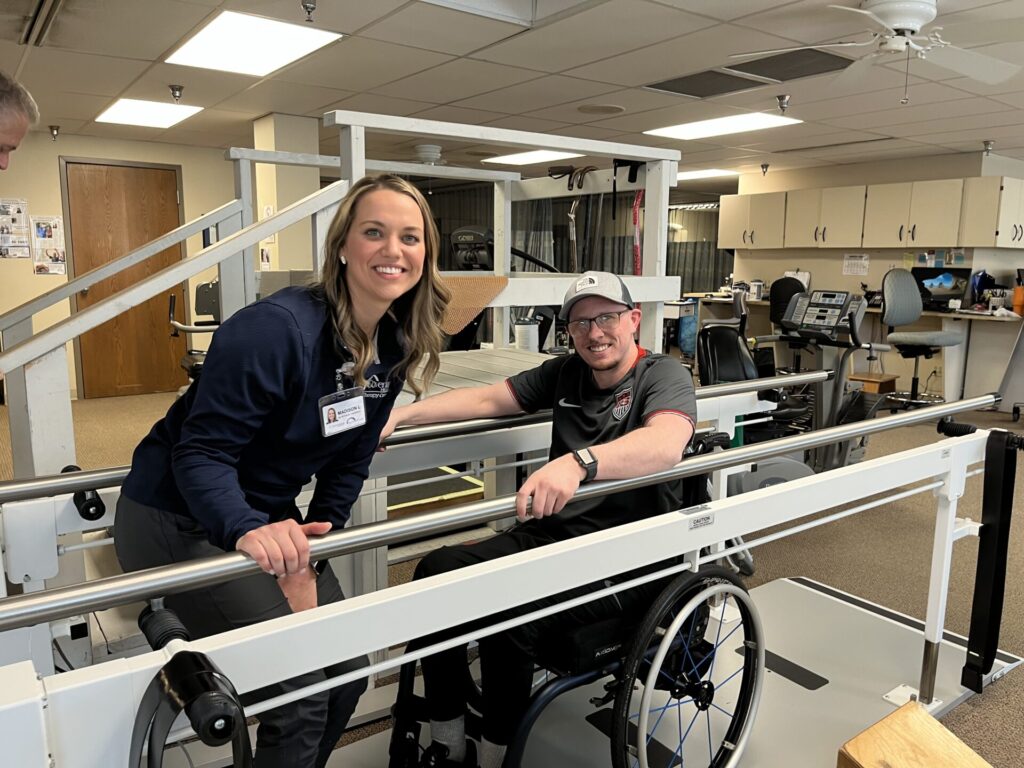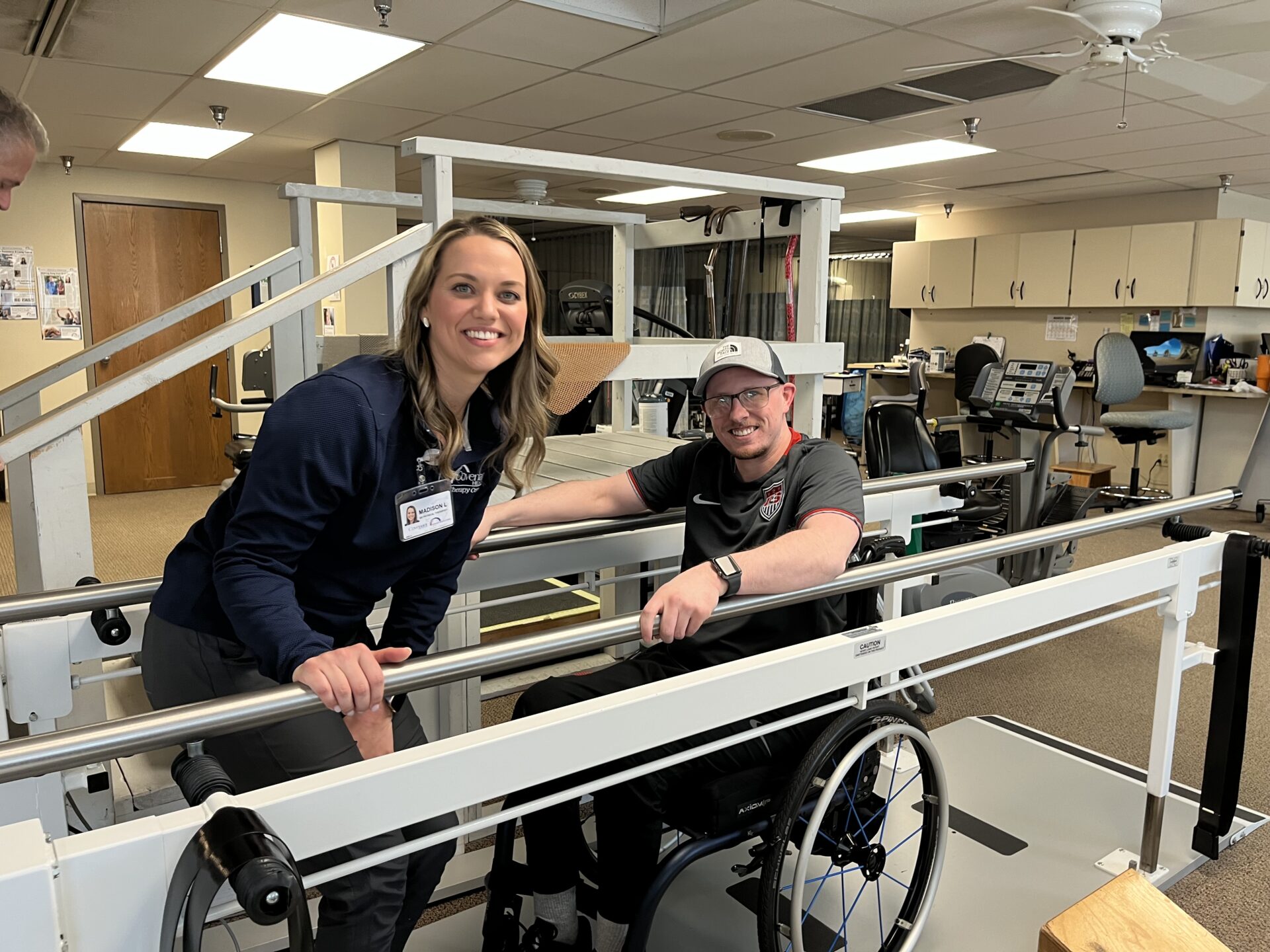- Find a DoctorDoctors by Specialty
- Cardiac Electrophysiology
- Cardiology
- Colon & Rectal Surgery
- Family Medicine
- Gastroenterology
- General & Vascular Surgery
- Gynecological Oncology
- Gynecology
- Infectious Disease
- Internal Medicine
- Interventional Cardiology
- Interventional Radiology
- Nephrology
- Neurology
- Neurosurgery
- Obstetrics & Gynecology
- Oncology
- Oncology & Hematology
- Orthopedic Surgery
- Otolaryngology
- Perinatology
- Psychiatry
- Pulmonary Medicine
- Radiation Oncology
- Rheumatology
- Sleep Medicine
- Thoracic Surgery
- Urology
- View All Doctors
- Our ServicesMedical Services
- Bariatric Services
- Behavioral & Mental Health
- Breast Care
- Cancer Care
- Critical Care
- Ear, Nose, & Throat
- Emergency Services
- Gastroenterology
- Glossary
- Heart Care
- Home Care
- Hospice & Palliative Care
- Imaging & Diagnostics
- Long-Term Care
- Nephrology
- Orthopedics
- Primary Care
- Rehabilitation Therapies
- Robotic-Assisted Surgery
- Sleep Services
- Spine Care
- Stroke Care
- Surgery Services
- Telehealth Services
- Urology
- Urgent Care
- Virtual Urgent Care
- Women’s Services
- Wound Care
- Our Locations
- Patients & Visitors
- About Us
How Nutrition, Physical Activity, Behavior and Medication Can Help You Achieve Your Goals
Obesity is more than a weight problem. Obesity is a long-term disease that can cause serious health issues. It can affect both adults and children and lead to developing diabetes, heart disease, high blood pressure, stroke, sleep apnea, joint problems and depression. We are now seeing as a society the treatment is not as simple as “eat less move more.”
At Cumberland Diabetes Center, weight management treatment is an integral aspect of our diabetes management but is offered to patients without diabetes as well. Ashley Brockman, MHS, PA-C, DMS, certified physician’s assistant at Cumberland Diabetes Center, is a recognized distinctive member of the Obesity Medicine Association (OMA). The OMA is an organization that provides specialty board certification in obesity medicine as well as comprehensive evidence-based guidelines to treat clinical obesity.
The OMA has an education system to train providers and patients about weight bias, overcome myths about weight loss, new science on why patients gain fat mass, and treatment algorithms focusing on the four pillars of clinical obesity, which are nutrition, physical activity, behavior and medication management.
Other profound accomplishments of the OMA have been the creation of a guidelines for identifying obesity based on body composition which focuses on the percent of fat mass, rather than just pounds. They have a staging system for the severity of obesity based on the amount of disease the fat mass has caused. This better identifies all at risk patients also know as the “skinny fat.” This also helps people realize that the heaviest person in the room is not the most unhealthiest.
Lastly and most importantly it demonstrates that weight management is not a side note in the management of other disease process like heart disease and diabetes. Weight management is a priority in managing a majority of other diseases. If we are serious about improving health we have to have a serious evidence-based game plan to reduce fat mass while gaining or maintain as much muscle mass as possible.
Brockman says “Clinical obesity is far more complex then we could have ever imagined and the science is evolving every day. Clinical obesity treatment is multifaceted and each facet must be addressed. We must use multiple tools in unison and be very clear about the root problem. It is a marathon not a sprint. I really want to share as much information and empower patients to break the old thought process about weight management. I want them to focus on strength and quality of health without compromise. Anyone can lose weight but are they healthier in the end? We have to change course and work together.”
Brockman suggests the following tips to manage your weight:
Pillar I: Nutrition
- View it as a lifestyle. There are many different good ideas about the proper way to eat but the best way is the one that you can adhere and helps you achieve you health goals. Rather than referring to the changes in your eating as a “diet,” view it as a lifestyle or “way of eating.” Take baby steps toward these changes to avoid being overwhelmed or burnt out with too much change too fast. Start with foundational changes such as getting enough protein daily. Once that is achieved focus on the next goal.
- Mindset of abundance. Brockman encourages patients to adopt a mindset of abundance rather than deprivation. She says, “Focus on getting the nutrient-dense foods needed to gain and maintain muscle, have good energy, and stabilize your mood. If we tell ourselves I have to get more of this healthy type of food it is a better mind-set then thinking about all the things we are best to avoid.” When the body is properly nourished, we tend to crave less of the nutrient-poor foods making the process easier.
- Eat & drink mindfully. Eat three protein-dense meals per day (unless told otherwise by your provider). Do not eat food past 8 pm this includes night shift workers. Chew 10 times per bite at least. Turn off electronic while eating. Hydrate with water at least 64 ounces (unless told otherwise by your provider), black coffee or green tea. If you have diabetes, try to get a continuous glucose monitor, this allows you to see in real-time which foods work well for your blood sugar and which ones do not.
Pillar II: Physical activity
- Follow the “Rule of 30.” Do not sit for periods longer than 30 minutes. Take a stretch break and walk around. Minimize time spent being sedentary, as studies have shown long sedentary periods negate the benefits of workouts. Get desk that can adjust to sit or stand.
- Consider “fitness snacking.” If you don’t have time to go to the gym, find other ways to include physical activity in your day. Take a few minutes going up and down the stairs, or try calisthenics such as squats or arm raises. Brief intervals of some activity are better than none at all. Remember: NEAT counts! Include movement described as “non-exercise activity thermogenesis” (or “NEAT”), such as parking further away from a building entrance, walking or biking instead of driving. Consider a goal of 5,000 to 10,000 steps per day – most importantly, set a goal that’s realistic for you!
- Use resistance. Aim for two to three sessions per week of some form of resistance training for muscle and bone health. This could be with resistance bands, body weight, light-weight dumbbells, or whatever you can do without injury. If you have an injury address it with your primary care or orthopedist prior to starting activity.
Pillar III: Behavior
- Be clear about your intention and believe you can do it. If you intend to do something and do not succeed, address what is stopping you from achieving that intention. Seek help for medical needs such as joint pain, depression or other physical, mental and social issues. Keep believing in yourself and set past failures aside. Look ahead of you, not behind you.
- Sleep counts. For adults, seven to eight hours of sleep per night is ideal. Address sleep issues with your primary care provider and develop habits that allow you to wind down at night. If you have symptoms of sleep apnea get a sleep study…ASAP! Sleep deprivation is a root cause of disease and weight gain.
- Plan meals ahead of time. Brockman explains scheduled meals with meal planning is essential for success. Make a grocery list and stick to it – have healthy options on hand when you feel hungry. Consider a mantra of moderation, and get back on track the next meal. BE THAT PERSON that brings your on low-carb tortilla to the restaurant, that asks the waitress if there is a healthy side, that brings the vegetables to the church potluck, or that brings the substitution to the family dinner. Inspire those around you.
Pillar IV: Medication
- Consult with a trained professional. Weight loss is NOT just about ‘eat less, move more.’ There are biochemical processes that effect weight gain, weight loss, and weight maintenance, as well as satiety and gut health. Consider seeing a provider who is trained in obesity medicine, and one who uses a comprehensive, evidence-based approach in choosing medications that work in conjunction with the other foundational pillars.
- Focus on overall health. When your doctor adjusts your medication, or you are setting goals to lose weight or improve health, consider the “whole picture.” Risk factors and other issues can affect other “categories” of health – blood pressure, sleep and mental health are all affected by our lifestyle choices. Think about what you want and what feels good to your body. It’s not always about the numbers, but rather determining and striving for what success looks like to you.
If you notice signs you could be diabetic, seek care with your medical provider. If the disease is caught early, it will be easier to manage.
For more information about the services at Cumberland Diabetes Center, please call (931) 459-7164. No physician referral required. Visit CumberlandDiabetesCenter.com.
























